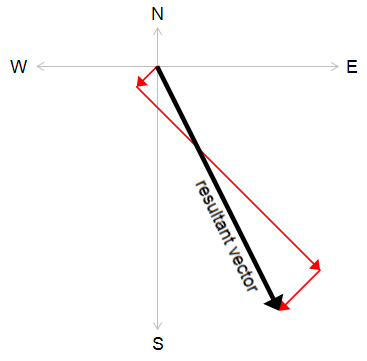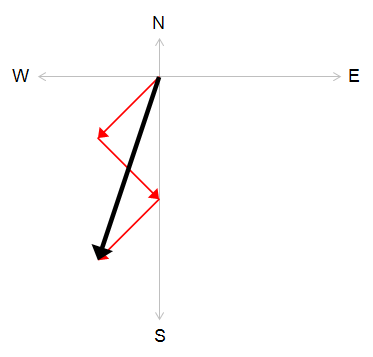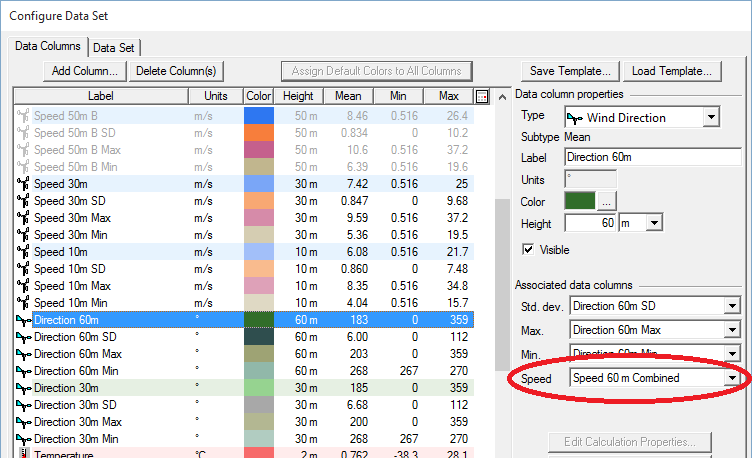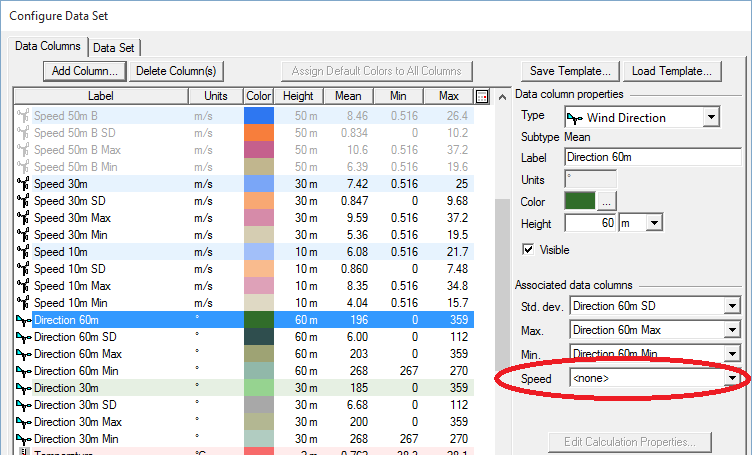
| Vector Mean |  |
To find the mean wind direction over some time interval, Windographer calculates a vector mean, also called a vector average. One calculates a vector mean by adding multiple vectors together tip to tail, and calculating the direction of the resultant vector.
As an example, imagine that the wind blows at 1 m/s from the northeast (45°) for an hour, then at 9 m/s from the northwest (315°) for an hour, then again from the northeast at 2 m/s for an hour. What is the average wind direction over that three-hour period?
The diagram below illustrates this situation by adding the three hourly vectors together to find the resultant vector, whose azimuth (338°) is the vector mean wind direction:

Another approach to calculating the vector mean direction is to assume 'unit vectors', meaning to ignore the magnitudes of the component vectors and treat them as if they were all of the same length. The diagram below illustrates this approach. The hourly vectors are all now equally sized and the vector mean direction changes to 18°:

The first diagram represents the most accurate calculation of the vector mean: the strong northwest wind has a larger effect on the vector mean direction than the weaker northeast winds, causing a northwesterly vector mean direction. The unit vector approach shown by the second diagram ignores the different speeds so that the two northeast hours outweight the one northwest hour and lead to a northeasterly vector mean direction. Strictly speaking, this is a less accurate representation of the vector mean, but it has the advantage that it requires directions only.
Note: A simple calculation of the scalar mean direction often gives erroneous results. In the example above, the scalar mean direction of (45° + 315° + 45°) / 3 = 135°, or southeasterly, is virtually the opposite direction of the true vector mean.
If you associate a speed sensor with a direction sensor in the Data Columns tab of the Configure Data Window, Windographer will consider its wind speeds when calculating vector means for that direction sensor:

If you choose <none> as the associated speed sensor, Windographer will assume unit vectors when calculating vector means for that direction sensor:

Windographer calculates vector means whenever it needs to report mean wind directions, including:
See also
Associated Data Column definition